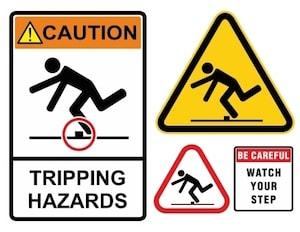Slips and Falls on Construction Sites

Fall injuries can be some of the most devastating injuries suffered on construction sites, whether the worker falls from a height or trips and falls at ground level. Falls consistently account for more fatalities in the construction industry than any other cause. In 2013, there were 796 total deaths in the construction industry, and 294 of those resulted from falls (36.9% of all deaths). The bureau of labor statistics reports:
Fatal falls, slips, or trips took the lives of 699 workers in 2013. Falls to a lower level accounted for 574 (82 percent) of those fatalities. In 2013, the height of the fall was reported for 466 of the fatal falls to a lower level. Of those, about 1 in 4 occurred after a fall of 10 feet or less. Another one-fifth of the fatal falls occurred from falls of over 30 feet.
The Washington Industrial Safety and Health Act (WISHA) sets forth mandatory regulations related to eliminating fall hazards on worksites. Unfortunately, many injuries and deaths from falls are preventable, and result from unsafe work conditions in violation of WISHA or other safety standards. OSHA, the federal equivalent of WISHA, reports that its construction site fall protection regulation, 29 CFR 1926.501, the federal equivalent of the WISHA regulation discussed in the following paragraphs, was the most frequently cited OSHA standard violated in 2013.
Washington State provides strict regulations intended to prevent falls from heights, requiring fall protection equipment at four feet or more. Among other things, WAC 296-155-24609 specifically requires:
- Guardrails, safety nets, fall restraint systems, catch platforms, warning lines, or personal fall arrest systems at unprotected sides and edges 4 feet or more above a lower level
- Ramps, runways, and inclined walkways that are 4 feet or more above the ground or lower level shall be equipped with a standard guardrail on both sides
- Floor openings must be guarded by a guardrail system, cover, or warning line system at least 15 feet from all unprotected sides or edges
- Wall openings generally must be protected by railings and toe boards
WAC 296-155-24611 provides even more stringent requirements which apply to fall hazards of ten feet or more.
WISHA also includes regulations intended to reduce the risk of slips, trips and falls, whether or not from a height. Employers are required to keep worksites tidy and free of clutter that could pose a tripping hazard to workers. Under WISHA’s “housekeeping” regulation WAC 296-155-020:
- Every floor, working surface, and passageway shall be kept free from protruding nails, splinters, loose boards or openings.
- In areas where workers may pass or perform duties, all debris and accumulations of material shall be removed. Hoses and electrical conductors across aisles or passageways shall be covered or suspended overhead so that there is no tripping hazard.
- Where mechanical handling equipment is used, sufficient safe clearances shall be allowed for aisles, at loading docks, through doorways and wherever turns or passages must be made. Such aisles and passageways shall be marked.
- Storage of material shall not create a hazard. Bags, containers, bundles, construction materials and other equipment shall be stored in tiers, stacked, blocked or interlocked. They shall be limited in height so that they are stable and secure against falling, sliding, or collapse.
- During the course of construction, alteration, repair or demolition of buildings and structures, employers shall ensure continuous clean-up of their work area, including removal of all rubble, scrap, boxes, crates and excess material to trash disposal areas.
- All floors and walkways shall be maintained in good condition. Loose or broken components shall be repaired or replaced. Secure footing shall be ensured on all floors and walkways.
If you or someone you know suffered a fall on a construction site, it is likely worth investigating whether the fall resulted from a negligent condition, including but not limited to a violation of WISHA regulations. Do you need a lawyer? Maybe not, but consulting an experienced personal injury lawyer is usually a good idea. Most personal injury lawyers will not charge for an initial consultation and will be willing to handle your case on a contingent fee basis, with any fee paid out of your final settlement or recovery. Given the ease with which many dangerous or defective conditions can be changed or repaired, a prompt consultation and investigation of your slip and fall can help to establish the facts crucial to proving your claim so that you can recover for your injuries.







